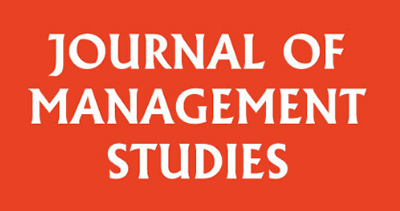
What drives creativity in the workplace? Researchers have long debated the impact of two key factors: creative self-efficacy (believing you can be creative) and intrinsic motivation for creativity (wanting to be creative). But which comes first, or do they influence each other reciprocally?
Understanding the interrelationship between these factors isn’t just academic—it has real-world implications. Not every employee starts out highly confident or deeply motivated about being creative. Knowing which factor influences the other more can help managers make smarter decisions about hiring and how to encourage employee creativity.
What did we find?
Our study, recently published in the Journal of Management Studies, explored how these dynamics play out in the real world. We conducted two experiments and a field study to examine the interrelationships between believing one can be creative and wanting to be creative in shaping creativity.
What were our key discoveries?
- Mutual Influence: Both creative self-efficacy and intrinsic motivation positively affect each other. However, the impact of believing in one’s creative abilities (creative self-efficacy) on wanting to be creative (intrinsic motivation for creativity) is stronger.
- Impact on Creativity: Wanting to be creative directly leads to higher creativity. Believing you can be creative also increases creativity but does so more indirectly, by increasing motivation first.
- Resilience: Employees who believe in their creative abilities are not just more resilient in facing challenges, but this resilience also makes them want to be creative more and then, they tend to achieve higher creativity. This chain effect is especially strong when tasks are difficult.
- Creative process engagement: Employees driven by an internal desire to be creative are more likely to engage in creative processes, which in turn boosts their belief in their creative capabilities.
So, what should managers do?
Given our findings, here are two takeaways for managers aiming to foster a more creative workplace:
Prioritize building confidence
Managers looking to boost creativity should focus on enhancing this “can-do” attitude. Here’s how:
- Select for confidence: When hiring, look for candidates who show a strong belief in their creative capabilities.
- Rethink motivation tools: Traditional incentives like rewards might increase external motivation but can inadvertently dampen the internal drive to create. Our findings suggest that strengthening an employee’s belief in their creative abilities is an effective way to enhance intrinsic motivation for creativity.
Boost creativity in the face of difficult tasks
When tasks get difficult and the right way forward isn’t clear, belief in one’s creative ability becomes crucial. It not only helps employees remain resilient in the face of difficulties but it also boosts their intrinsic motivation to engage creatively with their work. Managers can support this by using verbal encouragement and help employees achieve “small wins” in their creative endeavors.
In conclusion, our research highlights the importance of nurturing both the belief in one’s creative abilities and the intrinsic desire to be creative. Focusing on building a strong foundation of creative self-efficacy helps pave a path to fostering employee creativity, particularly when working on difficult tasks.

0 Comments